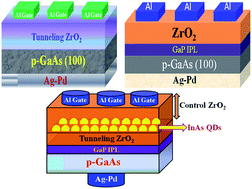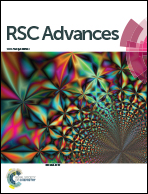Leakage current characteristics in MOCVD grown InAs quantum dot embedded GaAs metal-oxide-semiconductor capacitor
Abstract
The leakage current characteristics in metal-oxide-semiconductor (MOS) based capacitors, which have direct bearing on the charge retention property in a MOS based memory cell, is analyzed on the basis of the available conduction mechanisms. The current–voltage characteristics have been studied in GaAs MOS capacitors with three different structures such as Al/ZrO2/GaAs, Al/ZrO2/(GaP)GaAs, and Al/ZrO2/InAs QDs/ZrO2/(GaP)GaAs; the latter two being passivated by an ultrathin GaP interface passivation layer on GaAs. The current density in passivated devices is found to be at least one order of magnitude lower than that in unpassivated devices due to a passivation layer which reduces the surface states. In the case of passivated devices Fowler–Nordheim tunneling is found to be the dominant conduction mechanism, whereas the unpassivated devices follow Poole–Frenkel emission. However the quantum confinement and Coulomb blockade effect in QDs embedded devices play a major role towards decreasing the leakage current density further. The value of the leakage current in the QDs embedded device is found to be the lowest (∼10−6 A cm−2) and the current is primarily controlled by the Fowler–Nordheim tunneling.


 Please wait while we load your content...
Please wait while we load your content...